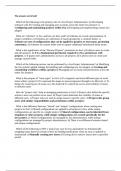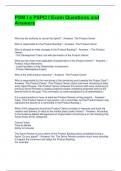Exam (elaborations)
Jira Project Administration (ACP-600) Exam Prep: 120 Practice MCQs
- Course
- Institution
Prepare for the ACP-600 Jira Project Administration Certification Exam with confidence using this comprehensive set of 120 practice multiple-choice questions. This resource is meticulously designed to test your knowledge and understanding of key Jira administration concepts, ensuring you're well-pr...
[Show more]




